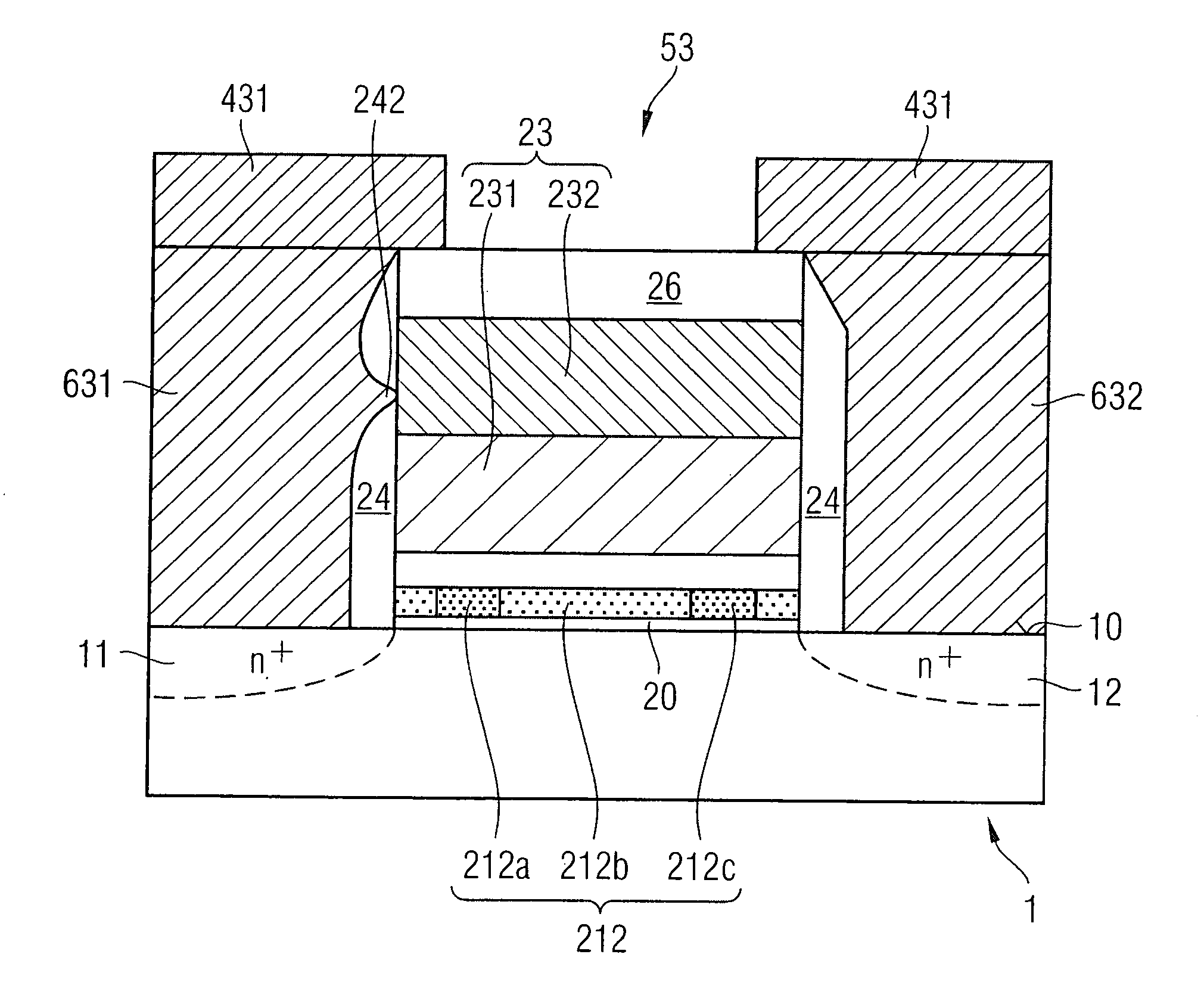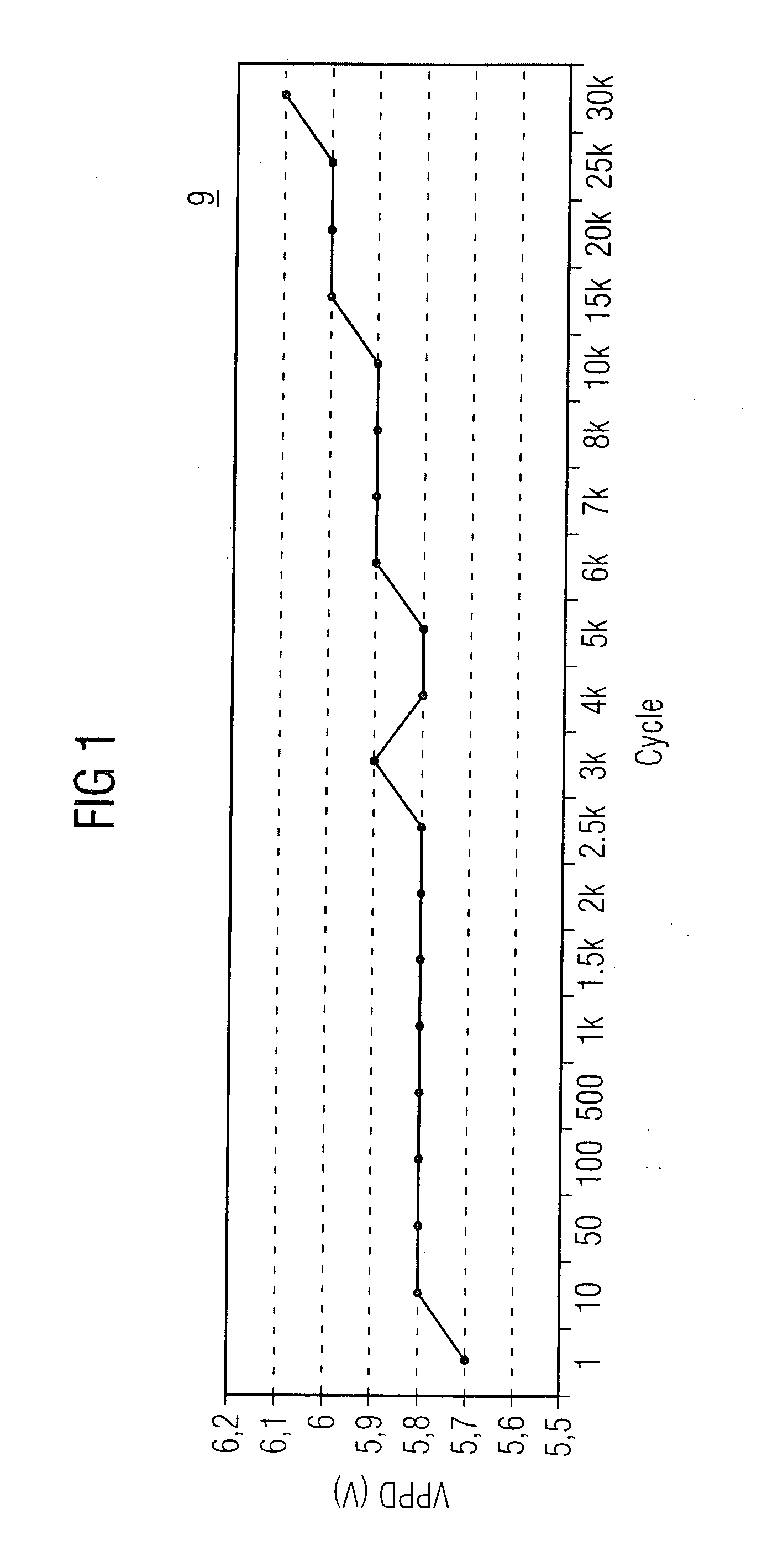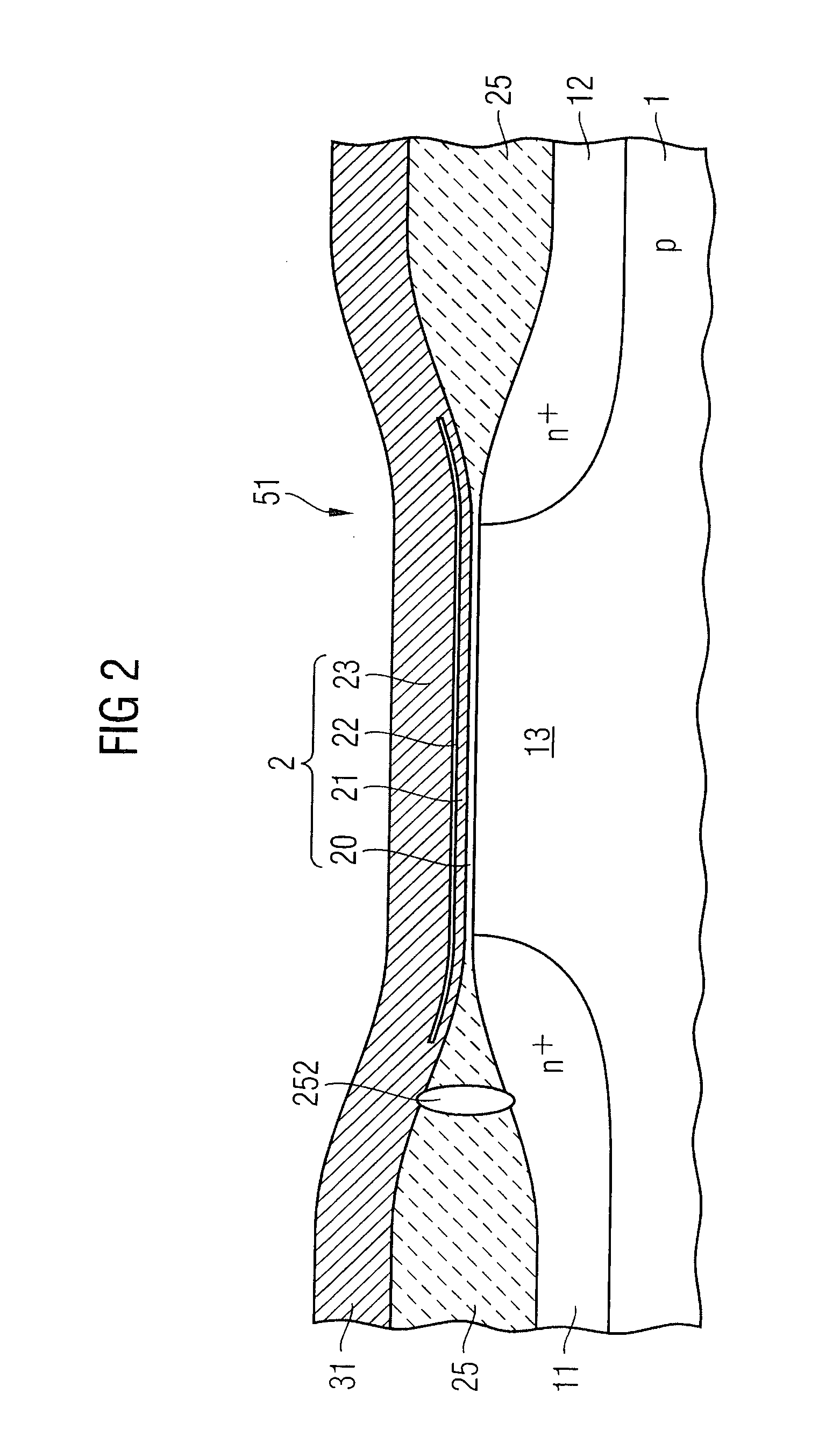Nonvolatile semiconductor memory device and method for testing the same
a semiconductor memory and non-volatile technology, applied in semiconductor devices, digital storage, instruments, etc., can solve the problems of low erase efficiency, low erase efficiency during stress voltage application, and inability to test, so as to increase test coverage and device reliability
- Summary
- Abstract
- Description
- Claims
- Application Information
AI Technical Summary
Benefits of technology
Problems solved by technology
Method used
Image
Examples
Embodiment Construction
[0038]FIG. 1 illustrates a diagram 9 that plots the erase voltage, which is respectively required for reliably erasing an exemplary nonvolatile memory cell, against the number of erase cycles to which the exemplary nonvolatile memory cell has yet been subjected. The exemplary memory cell is a two-bit electrically erasable programmable read only memory device with a charge-trapping layer (NROM). Each of the NROM cell bits is programmed by channel hot electron injection and is erased by channel hot hole injection.
[0039] According to diagram 9, an erase voltage of 5.8 V is initially sufficient to reliably erase the exemplary memory cell during the first 1000 erase cycles. As the injection of the hot electrons in the charge trapping layer during programming and the injection of the hot holes being injected during erasing are not perfectly symmetrical, erase efficiency deteriorates significantly with increasing number of erase cycles. Therefore, with increasing number of erase cycles ha...
PUM
 Login to View More
Login to View More Abstract
Description
Claims
Application Information
 Login to View More
Login to View More - R&D
- Intellectual Property
- Life Sciences
- Materials
- Tech Scout
- Unparalleled Data Quality
- Higher Quality Content
- 60% Fewer Hallucinations
Browse by: Latest US Patents, China's latest patents, Technical Efficacy Thesaurus, Application Domain, Technology Topic, Popular Technical Reports.
© 2025 PatSnap. All rights reserved.Legal|Privacy policy|Modern Slavery Act Transparency Statement|Sitemap|About US| Contact US: help@patsnap.com



